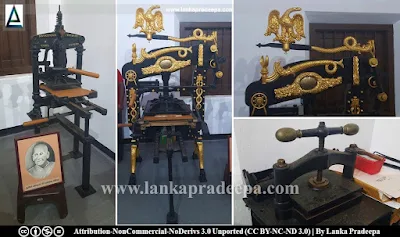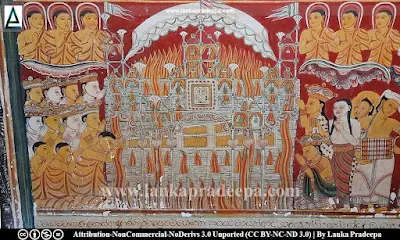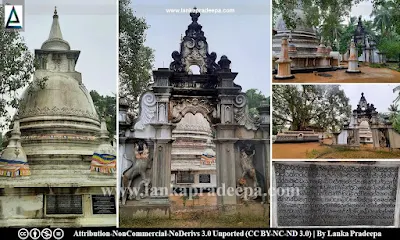
Ranwella Purana Viharaya and Giniwella Nawamuni Se Purana Viharaya (Sinhala: කතළුව රන්වැල්ල පුරාණ විහාරය, ගිනිවැල්ල නවමුණි සෑ පුරාණ විහාරය) are two Buddhist temples situated in Kathaluwa village in Galle District, Sri Lanka. The two temples are located adjacent to each other and divided by a fence. Both temples share the same Stupa and Bodhi tree.
History
Although there are two temples at the site today, initially there was only one temple, established around 1820. However, due to some issues that arose between two Buddhist sects, Amarapura Nikaya and Siyam Nikaya, it was divided into two temples namely, Ranwella Viharaya and Giniwella Viharaya.
Lankopakaraya Printing Press
The printing machine that was used for the oldest and first Sinhala Buddhist printing press in Sri Lanka named Lankopakaraya is presently preserved in the Ranwella temple premises. The machine was donated by Mongkut, the King of Siam (present Thailand) from 1851 to 1868, to Bulathgama Dhammalankara Siri Sumanatissa Nayaka Thera, the chief incumbent of Paramananda Viharaya at Galle and Ranawella Viharaya at Kathaluwa in 1862. The king is said to have purchased it from London for the purpose of promoting the publication of literary works relating to Buddhism (Abeyawardana, 2004).
The machine was used to print the first Sinhala Buddhist publication in the country, Lankalokaya. It was also used to print numerous Buddhist texts and manuscripts during the colonial period and hence played an instrumental role in the Sri Lankan Buddhist revival in the 19th century.
The press was damaged by a fire that occurred in 2012. It was restored in 2020 with financial support from the Ministry of Foreign Affairs of Thailand to commemorate the 65th anniversary of the diplomatic relationship between Thailand and Sri Lanka.
The temple
The image house
The Ranwella temple is popular for its valuable murals housed in the octagonal image house constructed on 13 November 1888. It has been erected on an elevated platform of about 1 m high and the doors and windows of it have Gothic features as those in the Christian churches.
A large Buddha statue in the Samadhi position is found inside the image house. The walls are adorned with paintings depicting the life events of the Buddha, Jataka stories, and hells. Of the paintings, the one showing the Buddha's coffin and cremation of it on an open-air pyre is considered special as it is not found in other temples in the country. The murals display Kandyan art influence together with maritime features.
The image house was renovated in 2014 with the contribution of funds from the Prince Claus Fund of the Netherlands.
The Stupa
The Stupa of the Giniwella temple is called Nawamuni Seya as it is surrounded by nine escort Stupas. As mentioned in the stone plaque that is fixed onto the base wall of the Stupa, the wife of Amarasekara of Kathaluwa village with the assistance of others has finished the works of this monument between the period 1841-1845.

 .
.See also
References
1) Abeyawardana, H.A.P., 2004. Heritage of Ruhuna: Major natural, cultural and historic sites. Colombo: The Central Bank of Sri Lanka. ISBN: 955-575-073-4. p.36.
Location Map
This page was last updated on 5 July 2022




